Seeds of Change by Gitta Gschwendtner and Maria Thereza Alves
German designer Gitta Gschwendtner and Brazilian artist Maria Thereza Alves have planted a garden on a derelict barge in Bristol Harbour using the kinds of foreign seeds that were once mixed up in ships' ballast before being dumped in the river (+ slideshow).
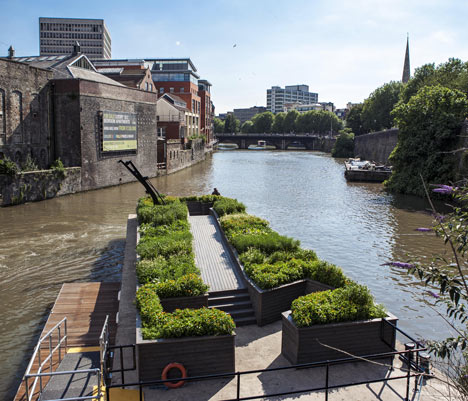
Seeds of Change is a floating garden on a disused concrete grain barge containing a variety of plants not native to Britain.
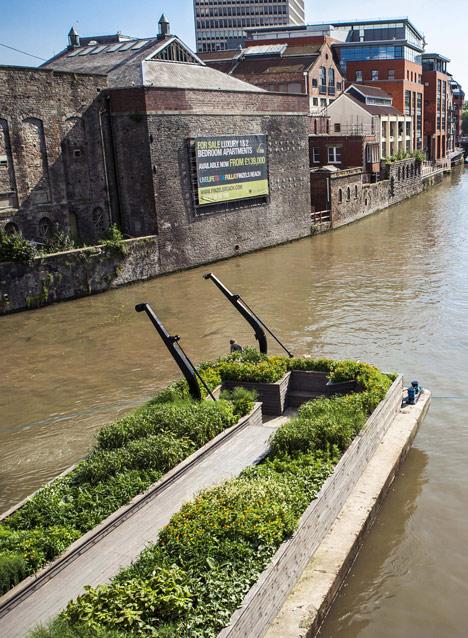
Raised beds line each side of the garden and an elevated central path disguises the raised opening where grain was once loaded into the barge.
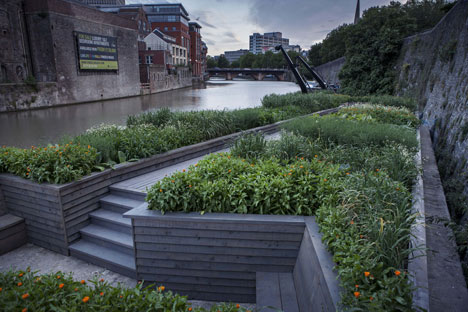
Through her research into old shipping routes, Alves discovered that ships returning from ports around the world would fill their hulls with earth and stones to stay weighed down on their return journey.
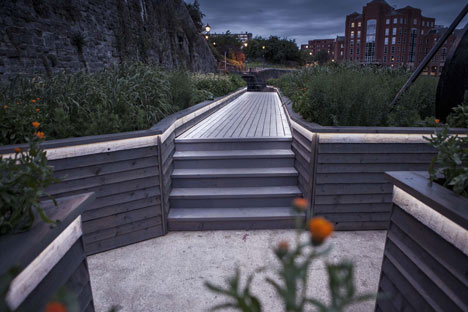

Once back in Britain, the earth – which contained seeds – was offloaded into the river. Alves discovered that if the riverbed were excavated, the dormant seeds could be regerminated to grow into plants.
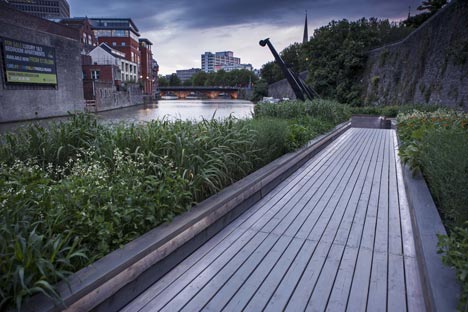

Inspired by this possibility, Alves and Gschwendtner designed a garden full of the types of plants that might once have had their seeds dumped in the river below.
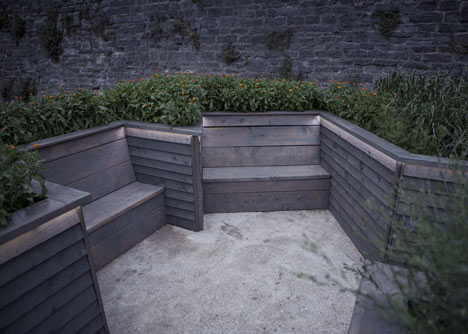

"Some of the plants are very familiar to us now, like marigold or rocket, but did not exist in Britain prior to shipping trade," Gschwendtner told Dezeen.



Gschwendtner is also taking part in Seven Designers for Seven Dials, an aerial installation in Covent Garden curated by Dezeen that will be on show throughout London Design Festival, which takes place between 14–23 September.
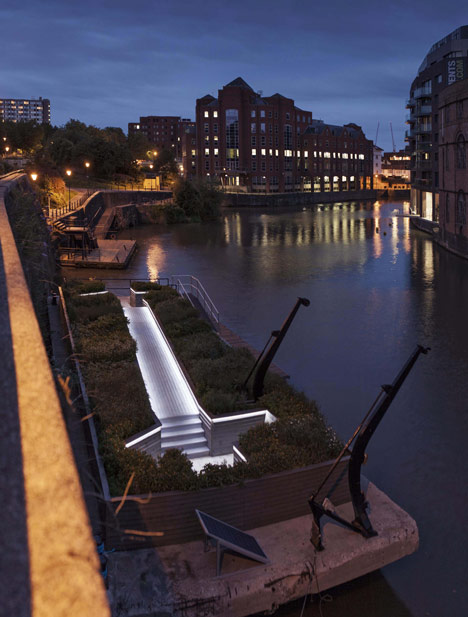

The designer is also making a one-off three-seater version of her Bodge Bench for the Stepney Green Design Collection curated by Dezeen.
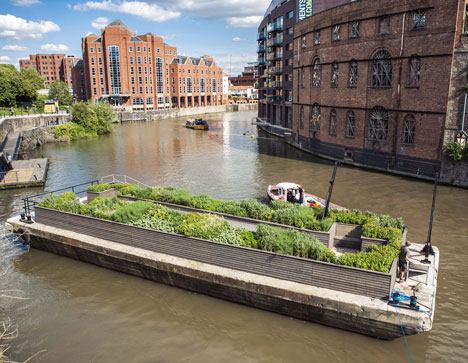

See all stories about Gitta Gschwendtner »
See all stories about gardens »
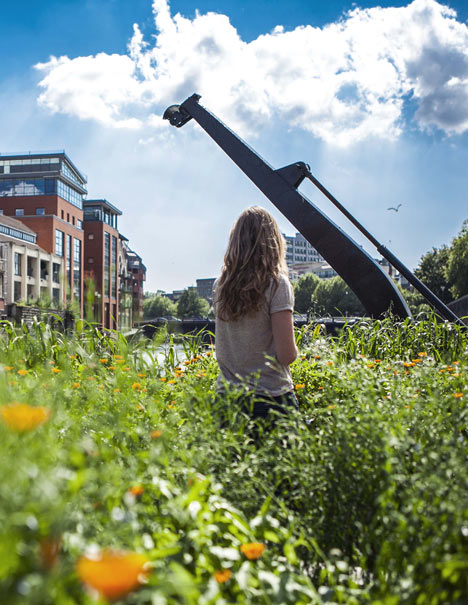

Photographs are by Max McClure.
Here's some more information from the designer and artist:
‘Seeds of Change’ is a floating garden; the result of a collaboration between the designer Gitta Gschwendtner and the artist Maria Thereza Alves.
The title ‘Seeds of Change' stems from an ongoing ballast seed garden project from Brazilian artist Maria Thereza Alves. Between 1680 and the early 1900s, ships' ballast - earth, stones and gravel from trade boats from all over the world used to weigh down the vessel as it docked - was offloaded into the river at Bristol. This ballast contained the seeds of plants from wherever the ship had sailed. Maria Thereza Alves discovered that these ballast seeds can lie dormant for hundreds of years, but that by excavating the river bed, it is possible to germinate and grow these seeds into flourishing plants.
Working with the University of Bristol Botanic Garden, Arnolfini and Bristol City Council and utilising a disused grain barge, Gschwendtner and Alves have created a Ballast Seed Garden on Bristol’s Floating Harbour, populated with a variety of non-native plants, creating a living history of the city’s trade and maritime past. Gitta Gschwendtner's design for the ballast seed garden aims to give the visitor an opportunity to experience the garden from various levels and perspectives. The raised bed structure with its sunken paths and seating areas immerses the visitor into the garden, while the elevated central area allows an overview of the entire ballast seed garden as well as its unique position on a floating barge.
The architecture of the garden works with the structural constraints of the concrete barge; the elevated section in the centre conceals and covers the raised aperture where grains were originally loaded into the barge. Sustainability is an important aspect of the project's objective. Both the garden's irrigation system - pumped straight from the river - and lighting are powered by solar panels, and the construction material used is sustainable pine treated with an environmentally friendly oil stain to soften the pine's appearance and preserve it from weathering.
Location: Floating Harbour (north side) between Bristol Bridge and Castle Park Water Taxi stops. Visible from Castle Park. Access by appointment